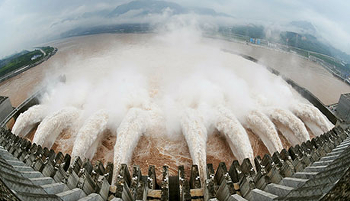By
Darell Maurice
The Democratic Republic of Congo and South Africa have reaffirmed their commitment to accelerate the planned extension of the hydroelectric Inga dams on the Congo River that could provide power to the whole of Africa.
Congolese President Joseph Kabila and his South African counterpart Jacob Zuma on Friday held talks in the Congolese capital Kinshasa and “welcomed the progress made in the implementation of the Treaty on the Grand Inga project” that concluded in 2013, as per the statement issued at the end of their meeting.
Presidents Zuma and Kabila “urged” the authorities in both countries “to accelerate the process to resolve all outstanding issues, in order to pave the way for the implementation of this pan-African project” as confirmd by Congolese Foreign Minister Raymond Tshibanda, in his reading of the statement.
The long-term Grand Inga project provides several phases of expansion of the electricity production capacity from the exceptional site of the Inga Falls, approximately 250 km south of Kinshasa, where there are currently two dams built in the 1970s and 1980s, today operating well below their capacity.
If fully realised, the site would have a production capacity of 40,000 MW, the equivalent of more than 24 third generation nuclear reactors, which would be exported to South Africa, but also to West Africa, even further north.
Kinshasa is currently working on the first step towards realising that dream: The Inga III Low-Head, which should enable the DRC to produce an additional 4,800 MW.
In gestation for over ten years, the Inga III – with a total cost estimated at $12 billion – was resurrected in 2013 through the promise made by South Africa to buy more than half of the new dam’s electricity production (2,500 MW) ensuring financial sustainability for the project.
Funded by the World Bank and African Development Bank (ADB), Inga III has nevertheless been delayed. In April, the World Bank indicated that work may start at the earliest in 2017, whereas Kinshasa initially wanted to start construction in late 2015.



No Comments Yet!
You can be first to comment this post!